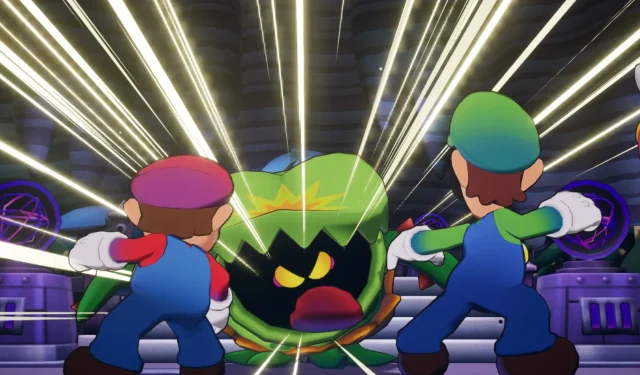
Highlights from the Development of Mario and Luigi: Brothership
- Originally, the game was set to feature an art style influenced by Acquire and Square Enix’s critically acclaimed HD-2D games, such as Octopath Traveler.
- This title signifies a significant resurgence in the Nintendo RPG series, marking its first new entry in nearly nine years, without the involvement of AlphaDream.
- Although pixel art was a considered option, the development team ultimately embraced a 3D graphical style.
In a recent interview, it was revealed that Mario and Luigi: Brothership initially explored a distinct art style inspired by the HD-2D aesthetics seen in Acquire and Square Enix’s Octopath Traveler. Notably, this installment represents a major comeback for the beloved Nintendo RPG franchise, being the first to release in almost a decade. However, it is important to note that this time, the game was not crafted by AlphaDream, as the studio ceased operations in 2019.
Instead, the development of Brothership was a collaborative effort with Acquire, a reputable Japanese studio known for its role in creating the Octopath Traveler series. The appeal of Acquire stemmed from their well-regarded expertise in RPG development, specifically their talent for blending intricate pixel art with immersive 3D environments, a hallmark of their recent titles. This creative direction has been echoed in other Square Enix games, such as Triangle Strategy and the anticipated Dragon Quest 3 HD-2D Remake.
During an recent interview with Nintendo, producer Akira Otani discussed the team’s considerations when selecting Acquire for the project, particularly their advanced 3D technology. He acknowledged an early idea to fashion the game in a similar manner to Octopath Traveler, but ultimately decided against it, opting for a 3D style instead to better fit the franchise’s established visual identity.
The Rationale Behind Choosing 3D Over Pixel Art





Otani articulated that while previous entries in the Mario and Luigi franchise utilized pixel art within the game itself, their box art consistently featured traditional 2D illustrations. He expressed concern that if the visual styles did not align, it may create confusion for fans. His aspiration was to create a cohesive visual experience that mirrored both the game and its marketing. Consequently, the graphics for Mario and Luigi: Brothership were developed using cel-shaded models, closely resembling the artwork on the box, rather than relying on traditional sprites.
Director Haruyuki Ohashi also shared his perspective on the challenges associated with pixel art. Drawing from his experience with pixel art animation in the No Heroes Allowed series, he acknowledged the technical complexities of the approach. While recognizing the distinctive charm of pixel animation in previous Mario and Luigi games, he believed it would be an arduous task to replicate at the needed level for a new release. Ultimately, the duo concluded that transitioning to a 3D format posed an exciting challenge and aligned well with the series’ evolution.




Leave a Reply